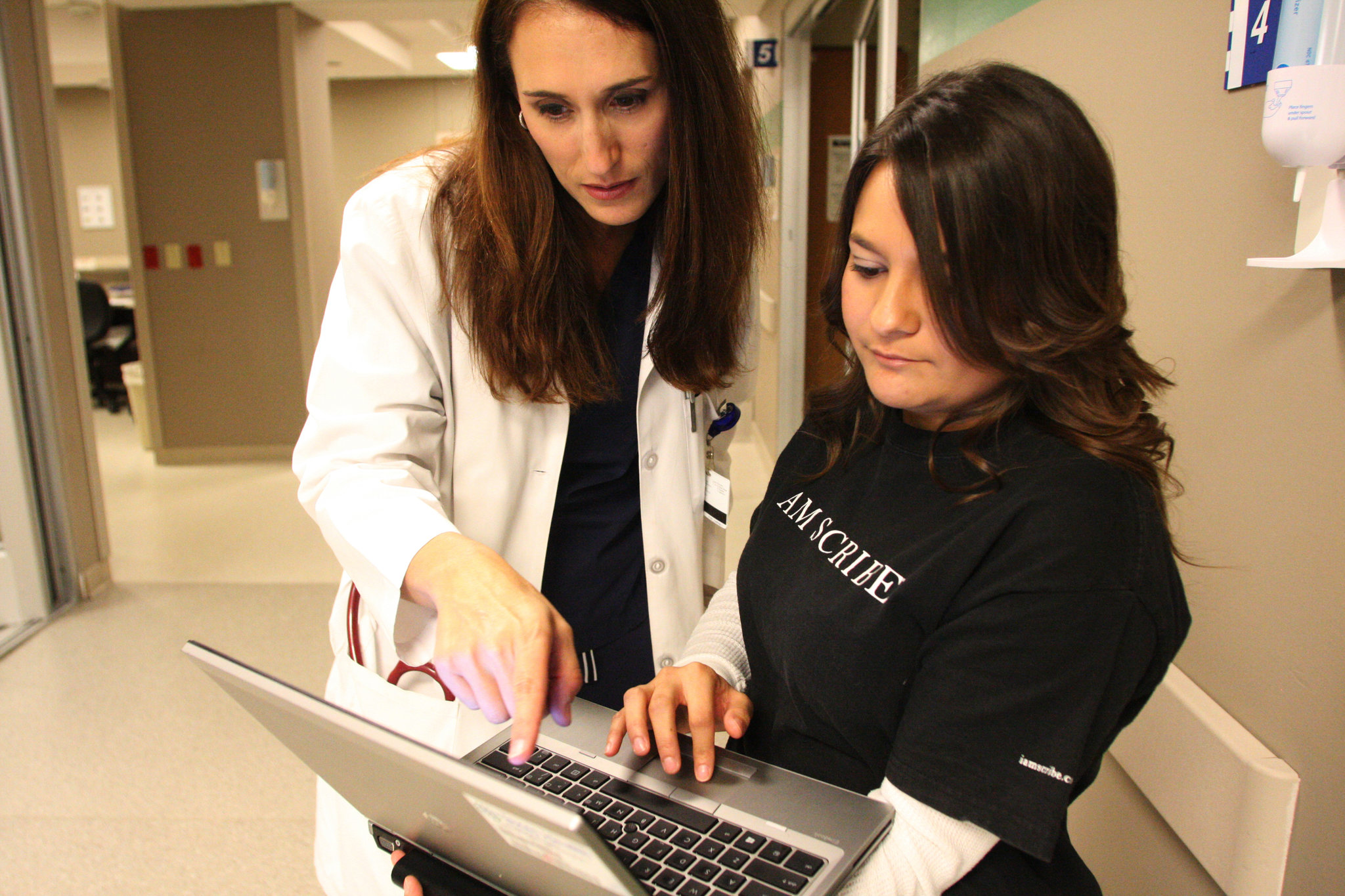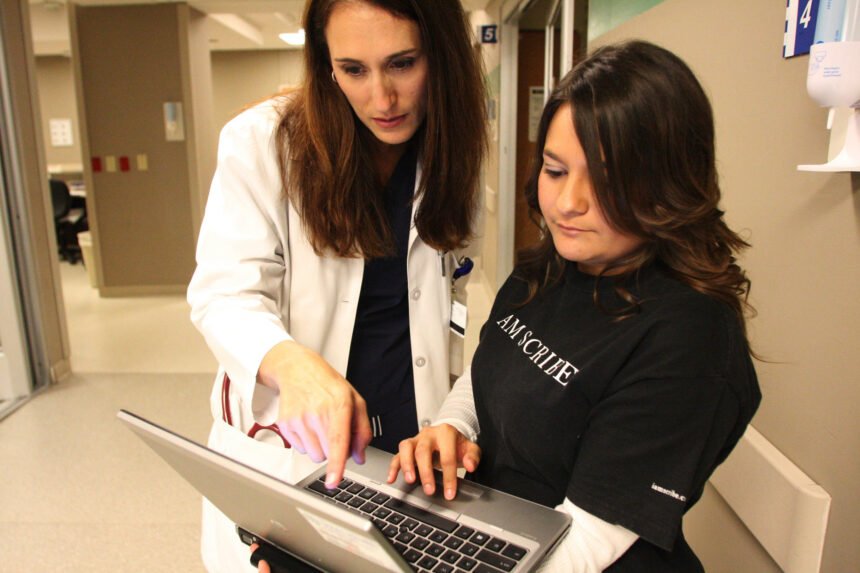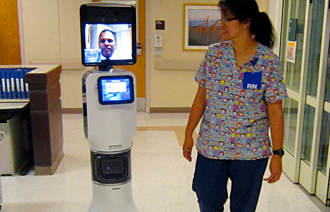Doesn’t it seem like there’s never enough time? Nowhere is this more prevalent than with our healthcare system. We don’t have enough time to do things that keep us well, and increasingly doctors don’t have time to spend with us to thoroughly understand our issues. A spate of recent articles tries to blame the implementation of technology and the EMR as taking even more time away from the patient/doctor relationship.
Doesn’t it seem like there’s never enough time? Nowhere is this more prevalent than with our healthcare system. We don’t have enough time to do things that keep us well, and increasingly doctors don’t have time to spend with us to thoroughly understand our issues. A spate of recent articles tries to blame the implementation of technology and the EMR as taking even more time away from the patient/doctor relationship.

Doctor and scribe, source New York Times
Electronic health records have become a disease in need of a cure, as physicians do their best to diagnose and treat patients while continuously feeding the data-hungry computer. “A Busy Doctor’s Right Hand, Ever Ready to Type“
This isn’t necessarily the fault of the EMR. It really stems back to money. One of the primary purposes of the EMR is to document for billing purposes and federal rebates. They weren’t designed to improve face-to-face care.
This New York Times article describes how scribes are helping to increase doctor face time with patients, but hiring another person to record what the patient is saying seems more like a band-aid solution.
Without much fanfare or planning, scribes have entered the scene in hundreds of clinics and emergency rooms. Physicians who use them say they feel liberated from the constant note-taking that modern electronic health records systems demand. Indeed, many of those doctors say that scribes have helped restore joy in the practice of medicine, which has been transformed — for good and for bad — by digital record-keeping.
What we really need is something like the “flipped doctor’s visit” being explored by the Robert Wood Johnson Foundation and inspired by Sal Khan, of the Khan Academy, an organization that has already made headway into education innovation by suggesting that classrooms are for homework and viewing lectures can be done at home. The idea of the flipped classroom is to maximize the interaction between teacher and pupil. The RWJF project suggests we need to do the same thing for the doctor’s visit.
The project is looking at ways that can turn the doctor’s visit on its head to get better results for patients and healthcare providers. While the example of EMR scribes seems like it might fit, to us it seems like a bit of a placebo. From personal experience, I had a doctor’s visit where an intern recorded my information and then read it back to the doctor and me. She had gotten some major facts wrong, for example, somehow she understood I worked in construction, not software. Open Notes and Blue Button, where patients see their own notes are two examples of trying to take this a step further. Who better than the patient to review what was written about them? We also need to return to documentation to improve patient care, not documentation for billing. The point of good documentation should be to accurately describe the situation and for continuity of care. Sadly, again technology is being blamed for an underlying issue of time, in this example the ability to copy and paste is being used for false records and billing. Again, it’s not the technology, it’s that people are pressed for time and again that time is money.
I recently had a few doctor visits that gave me time to pause and consider the flipped visit. The main thing that struck me is how different the doctor’s visit is from any other type of business interaction. As I was thinking about preparing for the visits with my list of things to make sure we cover, I thought about comparing this to a business meeting. The doctor had no agenda in advance, no idea why I was coming in, or even who she was meeting with until I walked in the room, and spent the first few minutes of a 10 minute visit looking at notes to try to remember who I was and what had happened before. Imagine you’d hired a consultant for a project (ie manage your health) who approached the project in this manner. You’d want your money back. You’d expect them to come to a meeting prepared. As the client you’d send them any pertinent information or updates for the project before the meeting. I was also trying to imagine the day of a doctor: every 10-15 minutes changing context with a new patient and no prep time. We talk about moving to a preventative model for healthcare. First step would be to enable doctors to prepare to see patients and decrease the documentation burden after they see them.
We need better and more cost effective ways of communicating in healthcare. Ones that focus on patient care and are seamless for both patients and healthcare providers. We have applied technology for better communication and collaboration in business and in our personal lives, how can we extend this to healthcare? How can we flip the doctor’s visit and how can technology help?
If you’re interested, the Robert Wood Johnson Foundation is hosting a Google Hangout on the flipped clinic January 16 at 11:00 am PST.









